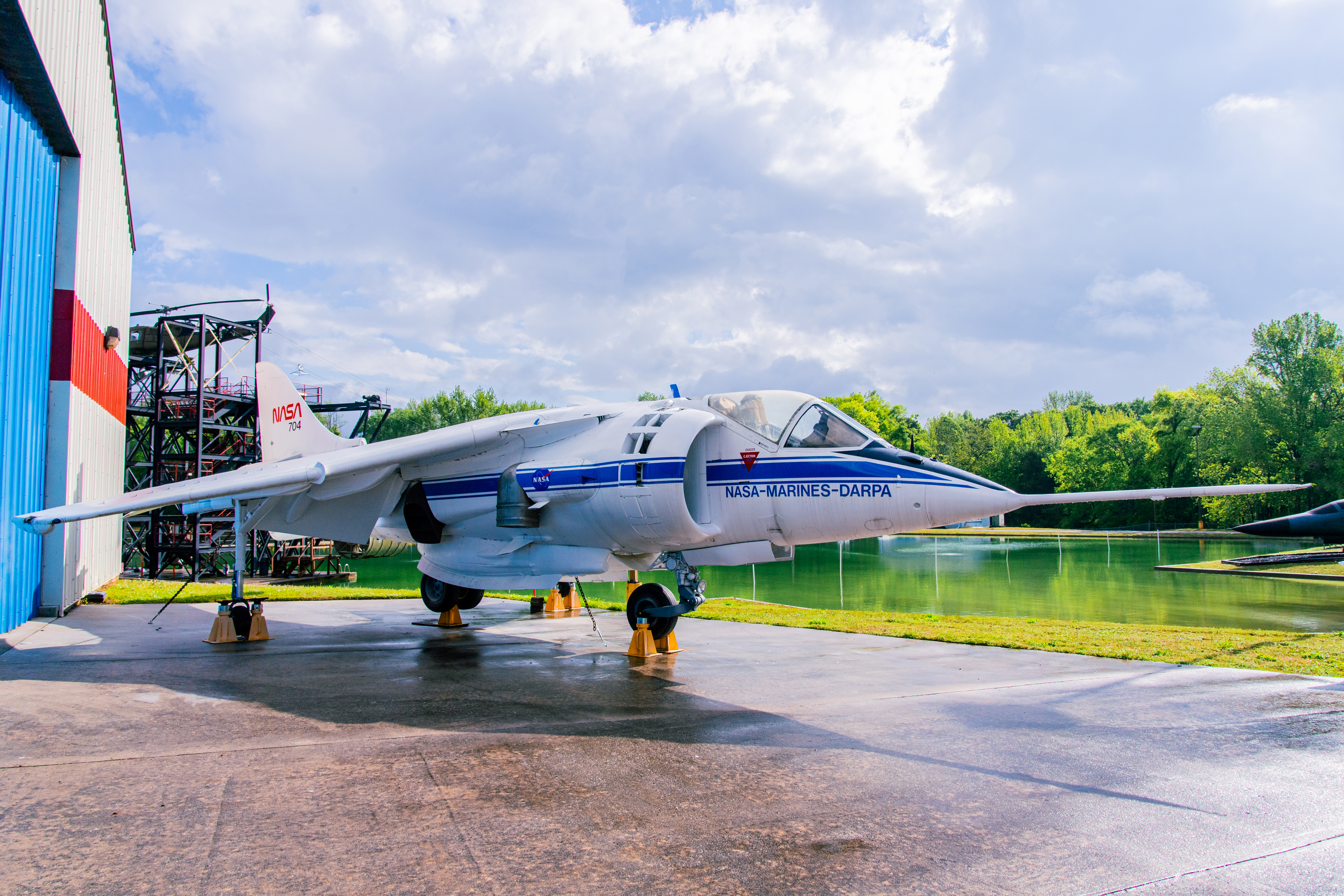
The AV-8B Harrier was a single-seat, light attack aircraft that provided offensive air support to the Marine Air-Ground Task Force (MAGTF). By virtue of its Vertical/Short Take-Off or Landing (V/STOL) capability, the AV-8B operated from a variety of amphibious ships, rapidly constructed expeditionary airfields, forward sites (e.g., roads), and damaged conventional airfields. This made the aircraft particularly well-suited for providing dedicated close air support. Other tasks included deep air support, armed reconnaissance, air interdiction, combat air patrol, armed escort missions and offensive missions against enemy ground-to-air defenses. The AV-8B V/STOL strike aircraft replaced the U.S. Marine Corps’ AV-8A and A-4M light attack aircraft. The United States Marine Corps (USMC) requirement for a V/STOL light attack force combined tactical mobility, responsiveness, reduced operating cost and basing flexibility, both afloat and ashore. The USMC requirements were first met by the basic British Aerospace Harrier I, but the improved AV-8B provided for longer range with greater payloads. Since the primary USMC support mission allowed the Harrier to operate with only one crewmember, the aircraft was designed with reduced weight, reduced maintenance and reduced concerns of maintaining the aircraft’s center of gravity during critical phases of flight. Its “fat” design provided a larger portion of internal volume to be used for fuel and equipment while the directed thrust allowed for a smaller wing area. The unique aircraft design was well suited to the Harrier’s main flight regime of low-level, high-speed ground attack.
During Operation Desert Storm, the USMC AV-8Bs participated extensively in expeditionary air operations. The Harrier II was the first Marine Corps tactical strike platform to arrive in theater and subsequently operated from various bases. More than 86 AV-8Bs operated from airfields and sea-based platforms in 1991 – 92. Some of these bases were only 35 nautical miles (40.22 miles, 64.73 kilometers) from the front lines, allowing these Harrier IIs to be highly responsive to meet critical close-air support requests. The unique design and basing plans allowed the aircraft to land, refuel and rearm, and then take off on a subsequent mission in less than 23 minutes. The AV-8B flew 3,380 sorties, or combat missions, for a total of 4,083 flight hours while maintaining a mission capable rate in excess of 90%. This level of operations demonstrated the built-in capabilities of this versatile aircraft. The USMC is using F/A-18s or the new F-35B to replace AV-8B operations. The YAV-8B on display at Aviation Challenge was assigned to the USMC and used for flight testing of various flight conditions and weapon loads. In 1978, the Harrier was transferred to NASA where it was used for supercritical wing research. It was not an operational aircraft or a combat veteran.

